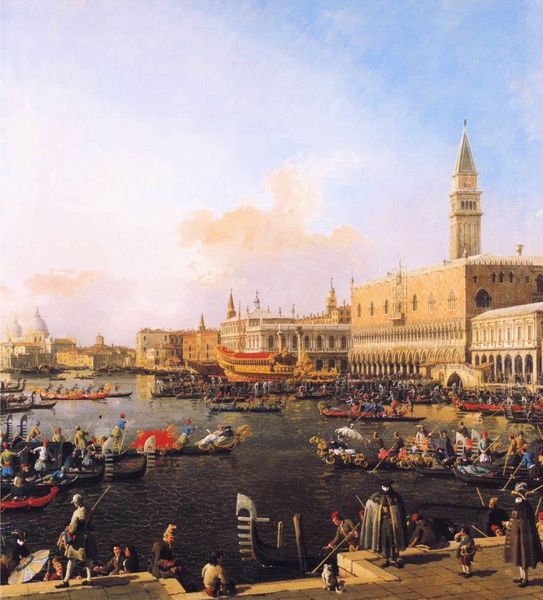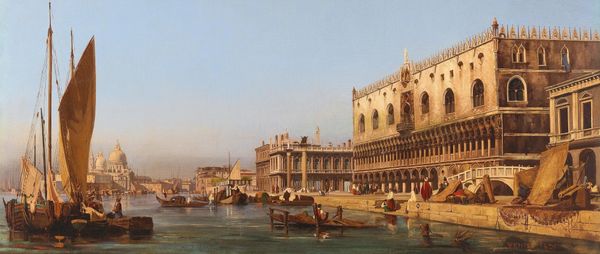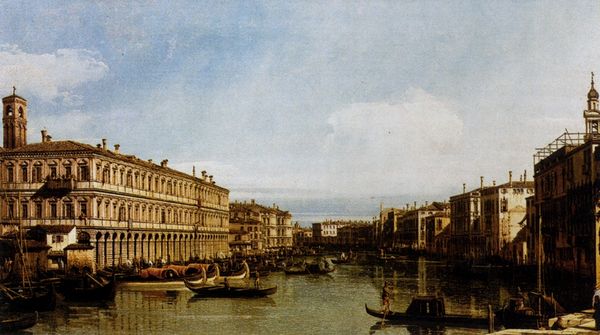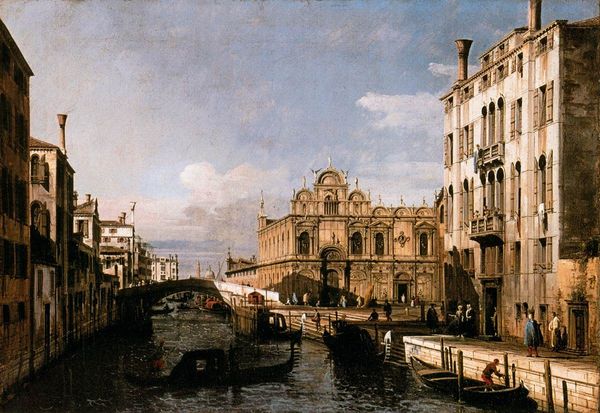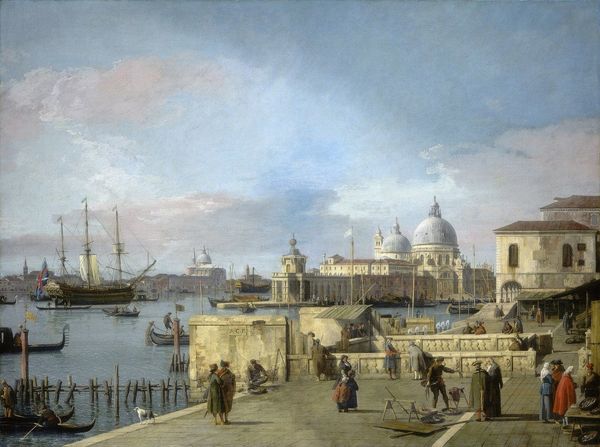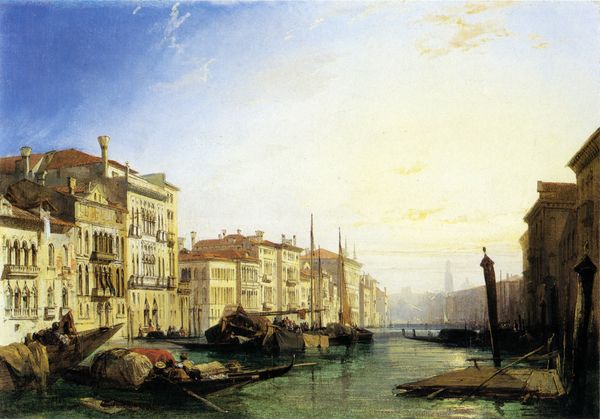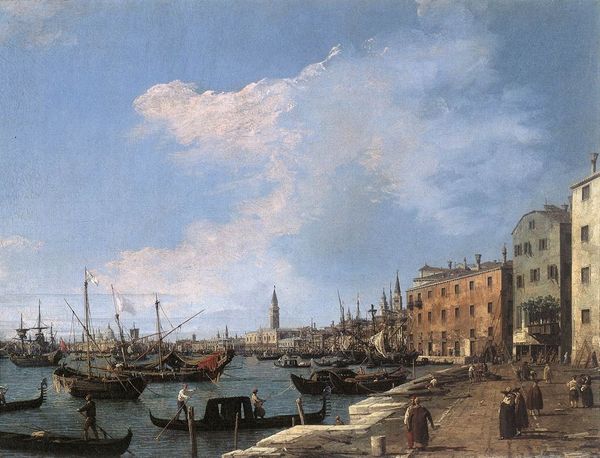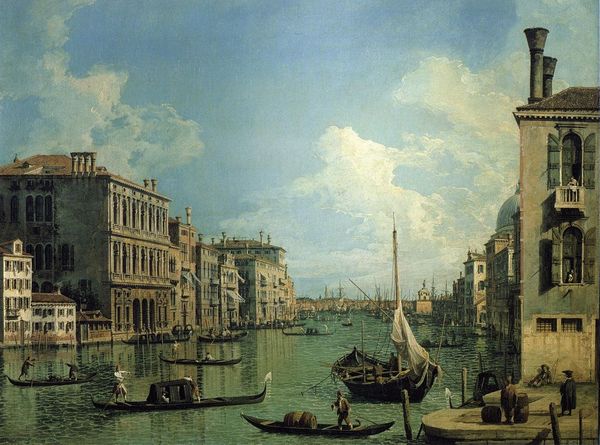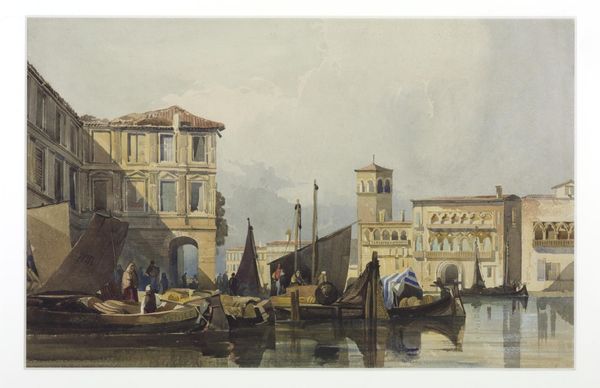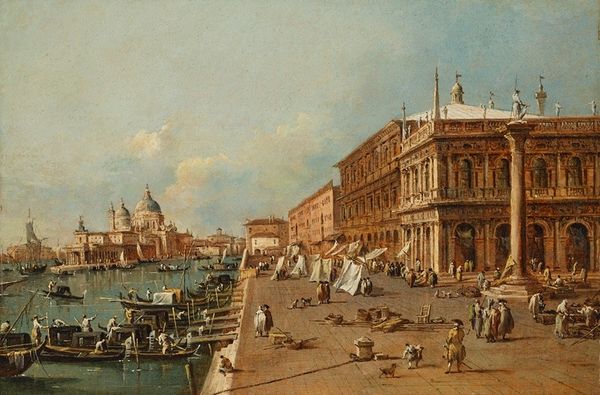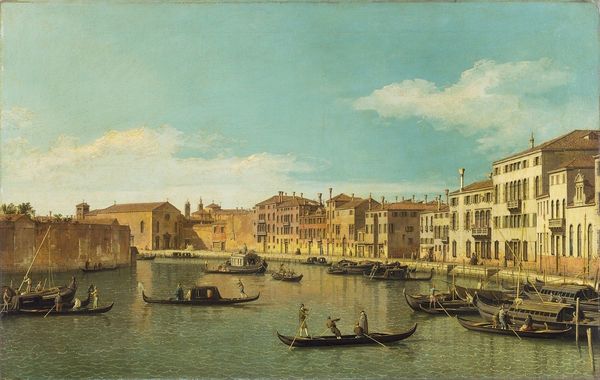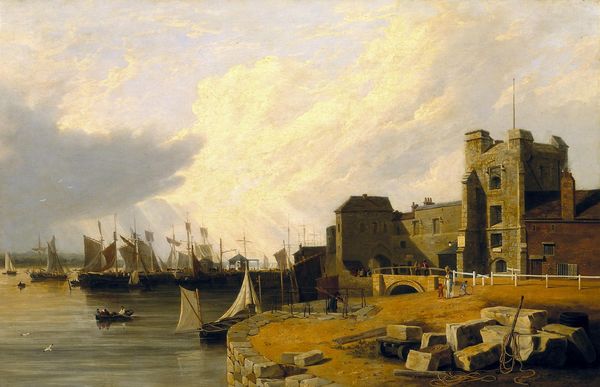
Dimensions: support: 1143 x 1626 mm
Copyright: CC-BY-NC-ND 4.0 DEED, Photo: Tate
Editor: This is Richard Parkes Bonington's "Venice: Ducal Palace with a Religious Procession," housed at the Tate. The oil paint application is so free, almost dissolving the architecture into light. How do you interpret this scene? Curator: I see a study in contrasts. The opulence of the Ducal Palace, built with exploited labor and imported materials, stands juxtaposed with the humble procession. What role does the materiality of the artist's tools – the pigments, the canvas – play in mediating this social dynamic? Editor: That’s a really interesting angle. I was mostly caught up in the visual splendour. Curator: Right, but consider how the artist's choice of materials and techniques both reflects and potentially obscures the realities of Venetian society at the time. Editor: That makes me think about who Bonington was painting for. Curator: Exactly! And how that affects our own consumption of this image today. Editor: Thanks, I will definitely keep an eye out for those dynamics in other works of art!
Comments
tate 6 months ago
⋮
http://www.tate.org.uk/art/artworks/bonington-venice-ducal-palace-with-a-religious-procession-n05789
Join the conversation
Join millions of artists and users on Artera today and experience the ultimate creative platform.
tate 6 months ago
⋮
This ambitious painting depicts a view along the Riva degli Schiavoni in Venice. The imposing building of the Doge’s palace is on the right. A religious procession enters the foreground from St Mark’s Square, behind the palace. into the foreground. Bonington only visited Venice once, in spring 1826, but the city made a lasting impression on him. He made numerous sketches from life while there, which he drew upon for later pictures. This is Bonington’s largest known work, and he exhibited it in 1828 to much acclaim. One critic praised it as ‘uniquely Venetian’. Gallery label, November 2021
